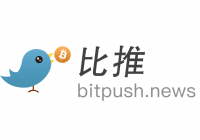HyperVault raises rug pull fears after $3.6m vanishes
Suspicious withdrawals from Hypervault have set off fears of a rug pull, with millions in crypto assets rapidly moved out of the platform.
- Hypervault sparks rug pull fears with $3.6 million drained and funneled through Tornado Cash.
- The protocol’s official X account vanished after the withdrawals, fueling fears that the team has abandoned the project.
- Rugpulls in 2025 remain costly, with cases like MetaYield Farm and Mantra causing multi-billion-dollar investor losses.
Hypervault Finance is facing rug pull allegations after about $3.6 million in crypto was drained from the project in a series of suspicious transactions. According to on-chain data , the funds were first bridged from Hyperliquid to Ethereum, then converted into ETH.
Roughly 752 ETH was later deposited into Tornado Cash, a mixing service commonly used to obscure transaction trails.
The unusual activity mirrors a pattern often linked to rug pulls in decentralized finance, with sudden, unexplained withdrawals routed through privacy tools. For users still holding funds tied to the project, the move has fueled fears of an exit scam.
What is Hypervault?
Hypervault Finance promoted itself as a decentralized vault protocol offering cross-chain liquidity and flexible yield opportunities. The project marketed itself as a safer way to manage assets across networks, targeting investors looking for passive income streams.
“Hypervault is the premier hub for yield on HyperEVM,” it claimed. Its connection to Hyperliquid , a rising player in the perpetuals exchange space, had given it added visibility in the market. However, those promotions may have been a facade, as the abrupt disappearance of funds is now calling that credibility into question.
Adding another layer of suspicion, Hypervault’s official X account vanished alongside the funds, and no statement has been issued at the time of writing.
 Screenshot of Hypervault’s profile amid rug pull concerns | Source: X
Screenshot of Hypervault’s profile amid rug pull concerns | Source: X
Rugpulls remain a risk in DeFi
Incidents like this highlight the persistent risks in decentralized finance. Rug pulls are a common exploit in the industry, where developers drain liquidity and abandon a project.
This trend has cost investors billions over the years. In some cases, even celebrity-backed or influencer-promoted projects have ended the same way, marketed as legitimate opportunities to attract retail investors, only for founders or promoters to quietly exit once liquidity peaks. These tactics often leave ordinary investors empty-handed, while those behind the schemes walk away with the proceeds.
So far this year, several cases have been recorded . The most significant to date came in February with MetaYield Farm, which drained $290 million from investors before vanishing.
Another such major incident was the fall of Mantra (OM), a DeFi protocol that collapsed in early 2025. In this event, insider wallets quickly moved $227 million in tokens, crashing OM’s price by over 90% and resulting in total investor losses of $5.5 billion. Founders denied wrongdoing, but wallet evidence and the rapid shutdown signaled classic rugpull patterns.
Until there is clarity from HyperVault’s team, the situation remains unresolved. The use of Tornado Cash, while not definitive proof, is a common tactic in cases where teams attempt to hide transactions after pulling funds, adding weight to speculation that the protocol’s operators may have walked away with users’ funds.
For now, the unusual activity suggests that Hypervault may be the latest rug pull in the DeFi sector.
Disclaimer: The content of this article solely reflects the author's opinion and does not represent the platform in any capacity. This article is not intended to serve as a reference for making investment decisions.
You may also like
$1.3 million in 15 minutes, the ones who always profit are always them

$8.8 billion outflow countdown: MSTR is becoming the abandoned child of global index funds
The final result will be revealed on January 15, 2026, and the market has already started to vote with its feet.

Deconstructing DAT: Beyond mNAV, How to Identify "Real vs. Fake HODLing"?
There is only one iron rule for investing in DAT: ignore premium bubbles and only invest in those with a genuine flywheel of continuously increasing "crypto per share."

Empowered by AI Avatars, How Does TwinX Create Immersive Interaction and a Value Closed Loop?
1. **Challenges in the Creator Economy**: Web2 content platforms suffer from issues such as opaque algorithms, non-transparent distribution, unclear commission rates, and high costs for fan migration, making it difficult for creators to control their own data and earnings. 2. **Integration of AI and Web3**: The development of AI technology, especially AI Avatar technology, combined with Web3's exploration of the creator economy, offers new solutions aimed at breaking the control of centralized platforms and reconstructing content production and value distribution. 3. **Positioning of the TwinX Platform**: TwinX is an AI-driven Web3 short video social platform that aims to reconstruct content, interaction, and value distribution through AI avatars, immersive interactions, and a decentralized value system, enabling creators to own their data and income. 4. **Core Features of TwinX**: These include AI avatar technology, which allows creators to generate a learnable, configurable, and sustainably operable "second persona", as well as a closed-loop commercialization pathway that integrates content creation, interaction, and monetization. 5. **Web3 Characteristics**: TwinX embodies the assetization and co-governance features of Web3. It utilizes blockchain to confirm and record interactive behaviors, turning user activities into traceable assets, and enables participants to engage in platform governance through tokens, thus integrating the creator economy with community governance.

